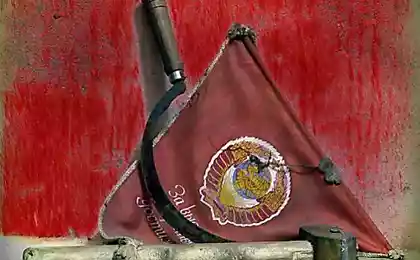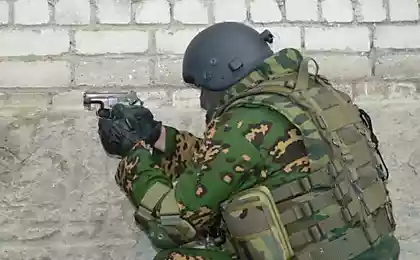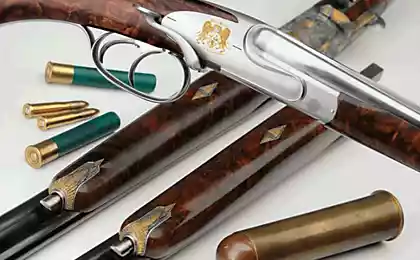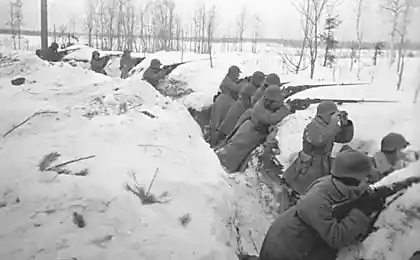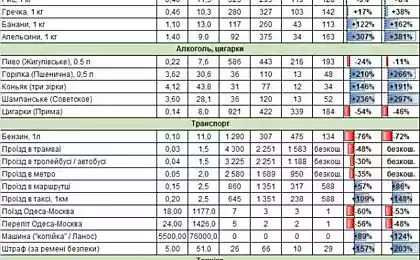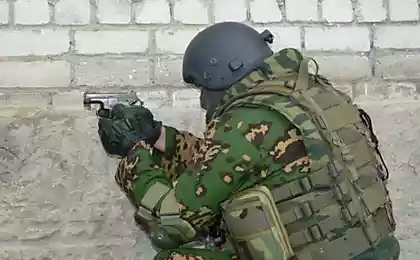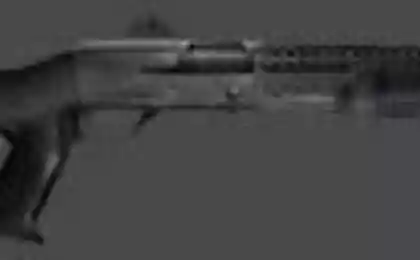992
As the Soviet scientists tamed combat lasers
1Q11 "Stiletto»
In the mid 60-ies the minds of the designers of the country of the Soviets possessed by a new idea - to combat lasers, namely mobile systems that could be used at the same time aiming for ballistic missiles and for blinding electronic "eye" of enemy equipment.
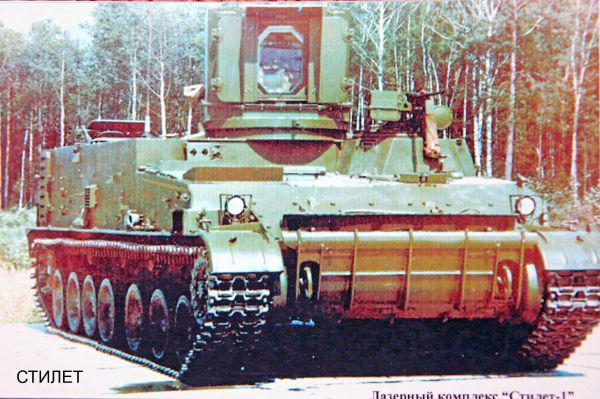
On the development of such technologies puzzled several design offices, but the contest won the Moscow Scientific-Production Association "Astrophysics". For the installation of the chassis and board complex posted Ural Plant of Transport Engineering, which was working one of the founding fathers of the country's self-propelled artillery Yuri Tomashov. Selecting "Uraltransmash" was not accidental, by the time this Ural plant was already a recognized authority in the production of self-propelled artillery.

- General Designer of this system was the son of the Soviet Defense Minister Nikolay Ustinov. The machine is intended for destruction, but not everything that gets in sight: the laser beam suppresses optoelectronic systems of military equipment of the enemy. Imagine a glass, which diverges from the inside small cracks: nothing can be seen, it is impossible to aim. The weapon becomes "blind" and turns into a pile of metal. It is clear that there is an extremely precise targeting mechanism that would not strayed when moving the machine. The problem of our KB was to create an armored vehicle capable of carrying a laser installation carefully, like a glass bowl. And we managed to do it - said in an interview with "RG" Yuri Tomashov.
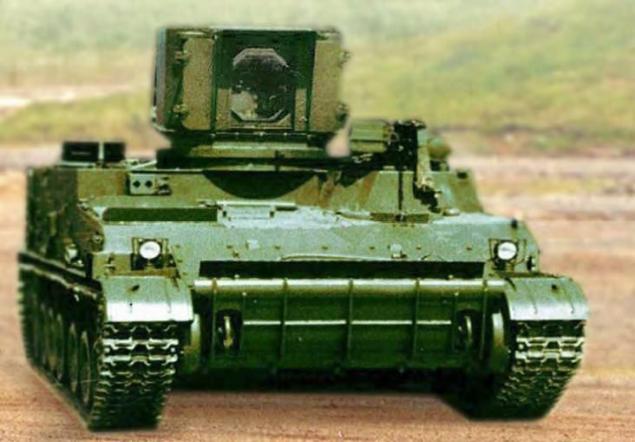
Prototypes "Stiletto" appeared in 1982. The spectrum of its use in combat was even broader than initially anticipated. None of the existing at the time of electro-optical targeting systems could not stand it "look." In battle, it would look something like this: a helicopter, a tank or any other military equipment tries to aim, but at this point, "Stiletto" is already sending a blinding beam that burns photosensitive elements pointing guns of the enemy.
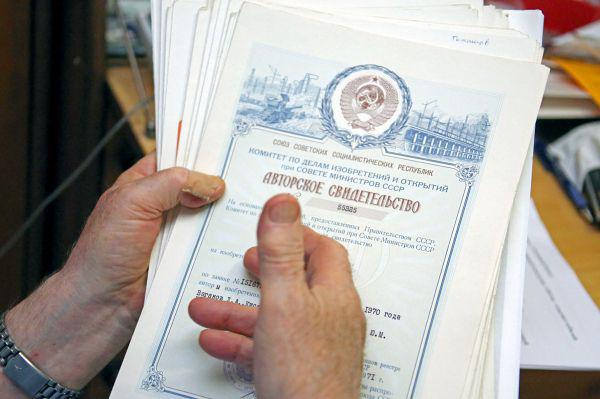
Field Research has also shown that the retina of the human eye and literally burn from getting "shell" of the latest laser self-propelled guns. But there slow enemy tanks or airplanes, "Stiletto" is able to bring down even ballistic missiles that fly at a speed of 6.5 kilometers per second. Aiming and guidance "laser tank" being a turret horizontally or with special oversized mirrors, whose position can be changed.
There were built two prototypes. In mass production they were not allowed, but their fate is not so sad, as it could be. Despite the exclusivity of "series", both complexes are still listed by the Russian Army, and their combat characteristics and is now forced to admire and be terrified of any possible opponent.
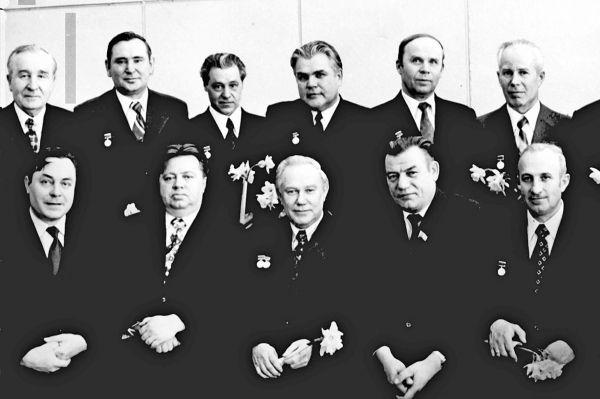
CLA 1K17 "Compression»
His appearance in the light of "compression" is also obliged NGO "Astrophysics" and "Uraltransmash." As before, the Muscovites were responsible for the technical component and the "smart stuffing" complex and sverdlovchane - its driving performance and competent installation designs.
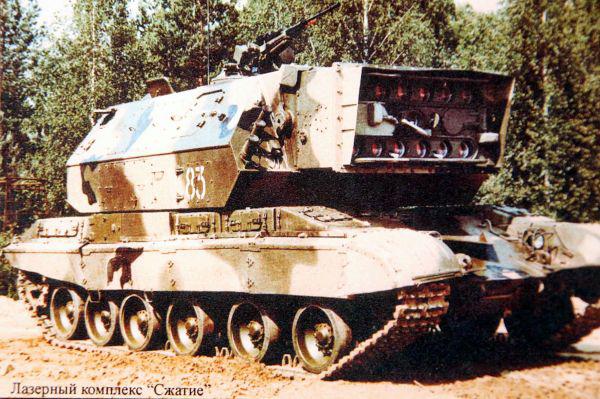
The first and only machine was released in 1990 and resembles a "Stiletto", but only superficially. Over the 10 years that have passed between the release of these two cars, the association "Astrophysics" has surpassed itself and fully modernized laser system. Now it consisted of 12 optical channels, each of which had an individual and independent guidance system. Made this change was to reduce the chances of the enemy to protect itself from attack by a laser filters. Yes, if radiation in the "compression" originated from one or two channels, the conventional helicopter pilot and his machine could escape from the "blindness" of the laser beams 12 but varying their wavelength was converged to zero chance.
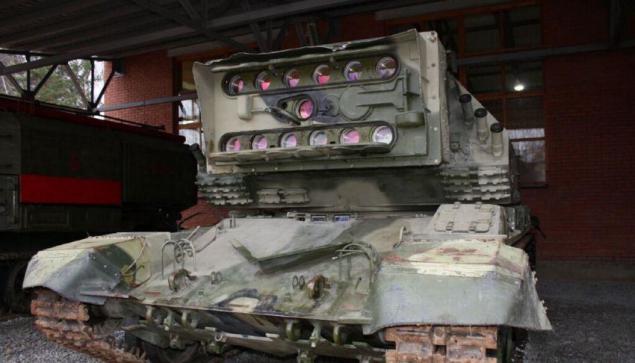
There is a beautiful legend that specifically for this machine was grown synthetic ruby crystal weighing 30 pounds. This ruby, topped with a thin layer of silver, played the role of a mirror for the laser. Experts that seems unlikely - even at the time of the appearance of a single laser ruby laser machine that would have been obsolete. Most likely, in the automotive complex "Compression" was used with the addition of yttrium aluminum garnet neodymium. This technology is called YAG lasers, and at its base is much more powerful.
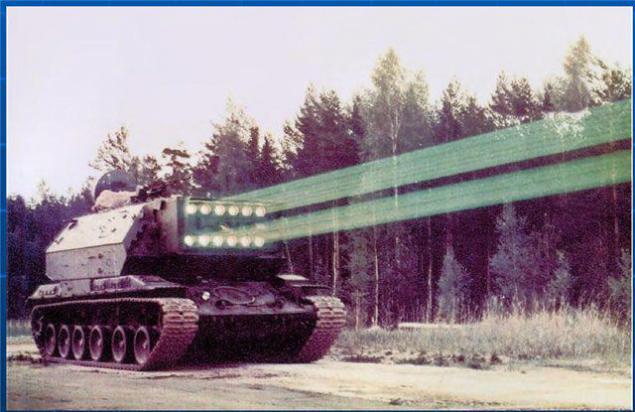
In addition to its main task - disabling electron optics enemy machines - "compression" could be used for precise guidance allied vehicles in conditions of poor visibility and difficult climatic conditions. For example, during the installation of fog can find the target and label it for other machines.
The only released the machine is in the village of Ivanovo art museum in Moscow. Alas, the mass production of these two self-propelled guns laser never had: the collapse of the USSR and the short-sightedness of the military leadership of those years, and then the absolute lack of money hacked these brilliant technical projects in the bud.
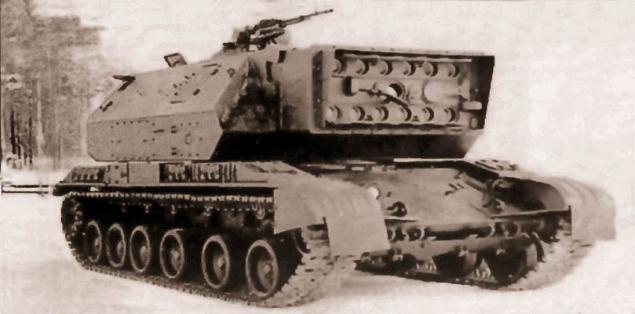
- The tests were just two options: "Stiletto" more powerful "contraction". For this work, the group was awarded the Lenin Prize. Laser self-propelled have adopted, but unfortunately, in the series, it never came. In the nineties, the complex was considered too expensive, - says Yuri Tomashov.
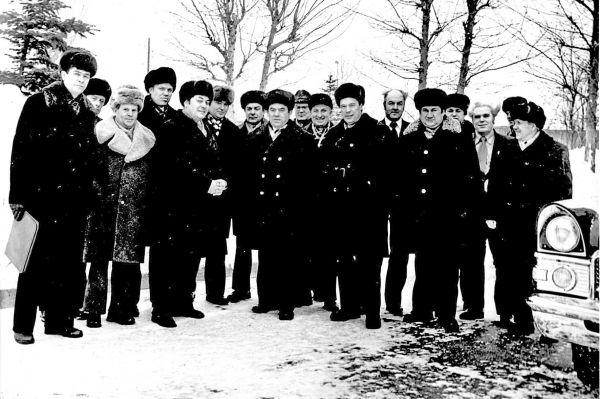
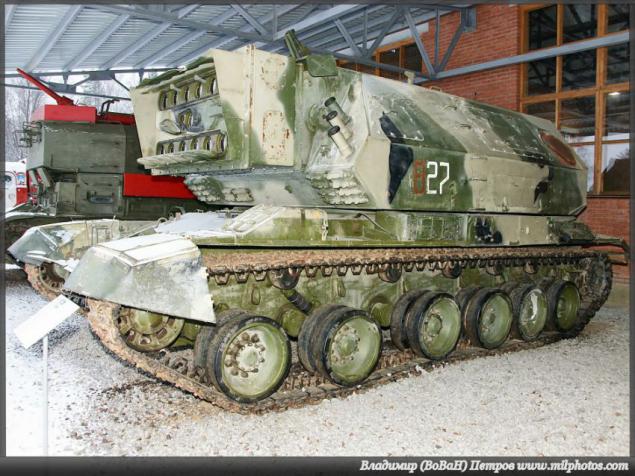
In the mid 60-ies the minds of the designers of the country of the Soviets possessed by a new idea - to combat lasers, namely mobile systems that could be used at the same time aiming for ballistic missiles and for blinding electronic "eye" of enemy equipment.

On the development of such technologies puzzled several design offices, but the contest won the Moscow Scientific-Production Association "Astrophysics". For the installation of the chassis and board complex posted Ural Plant of Transport Engineering, which was working one of the founding fathers of the country's self-propelled artillery Yuri Tomashov. Selecting "Uraltransmash" was not accidental, by the time this Ural plant was already a recognized authority in the production of self-propelled artillery.

- General Designer of this system was the son of the Soviet Defense Minister Nikolay Ustinov. The machine is intended for destruction, but not everything that gets in sight: the laser beam suppresses optoelectronic systems of military equipment of the enemy. Imagine a glass, which diverges from the inside small cracks: nothing can be seen, it is impossible to aim. The weapon becomes "blind" and turns into a pile of metal. It is clear that there is an extremely precise targeting mechanism that would not strayed when moving the machine. The problem of our KB was to create an armored vehicle capable of carrying a laser installation carefully, like a glass bowl. And we managed to do it - said in an interview with "RG" Yuri Tomashov.

Prototypes "Stiletto" appeared in 1982. The spectrum of its use in combat was even broader than initially anticipated. None of the existing at the time of electro-optical targeting systems could not stand it "look." In battle, it would look something like this: a helicopter, a tank or any other military equipment tries to aim, but at this point, "Stiletto" is already sending a blinding beam that burns photosensitive elements pointing guns of the enemy.

Field Research has also shown that the retina of the human eye and literally burn from getting "shell" of the latest laser self-propelled guns. But there slow enemy tanks or airplanes, "Stiletto" is able to bring down even ballistic missiles that fly at a speed of 6.5 kilometers per second. Aiming and guidance "laser tank" being a turret horizontally or with special oversized mirrors, whose position can be changed.
There were built two prototypes. In mass production they were not allowed, but their fate is not so sad, as it could be. Despite the exclusivity of "series", both complexes are still listed by the Russian Army, and their combat characteristics and is now forced to admire and be terrified of any possible opponent.

CLA 1K17 "Compression»
His appearance in the light of "compression" is also obliged NGO "Astrophysics" and "Uraltransmash." As before, the Muscovites were responsible for the technical component and the "smart stuffing" complex and sverdlovchane - its driving performance and competent installation designs.

The first and only machine was released in 1990 and resembles a "Stiletto", but only superficially. Over the 10 years that have passed between the release of these two cars, the association "Astrophysics" has surpassed itself and fully modernized laser system. Now it consisted of 12 optical channels, each of which had an individual and independent guidance system. Made this change was to reduce the chances of the enemy to protect itself from attack by a laser filters. Yes, if radiation in the "compression" originated from one or two channels, the conventional helicopter pilot and his machine could escape from the "blindness" of the laser beams 12 but varying their wavelength was converged to zero chance.

There is a beautiful legend that specifically for this machine was grown synthetic ruby crystal weighing 30 pounds. This ruby, topped with a thin layer of silver, played the role of a mirror for the laser. Experts that seems unlikely - even at the time of the appearance of a single laser ruby laser machine that would have been obsolete. Most likely, in the automotive complex "Compression" was used with the addition of yttrium aluminum garnet neodymium. This technology is called YAG lasers, and at its base is much more powerful.

In addition to its main task - disabling electron optics enemy machines - "compression" could be used for precise guidance allied vehicles in conditions of poor visibility and difficult climatic conditions. For example, during the installation of fog can find the target and label it for other machines.
The only released the machine is in the village of Ivanovo art museum in Moscow. Alas, the mass production of these two self-propelled guns laser never had: the collapse of the USSR and the short-sightedness of the military leadership of those years, and then the absolute lack of money hacked these brilliant technical projects in the bud.

- The tests were just two options: "Stiletto" more powerful "contraction". For this work, the group was awarded the Lenin Prize. Laser self-propelled have adopted, but unfortunately, in the series, it never came. In the nineties, the complex was considered too expensive, - says Yuri Tomashov.




